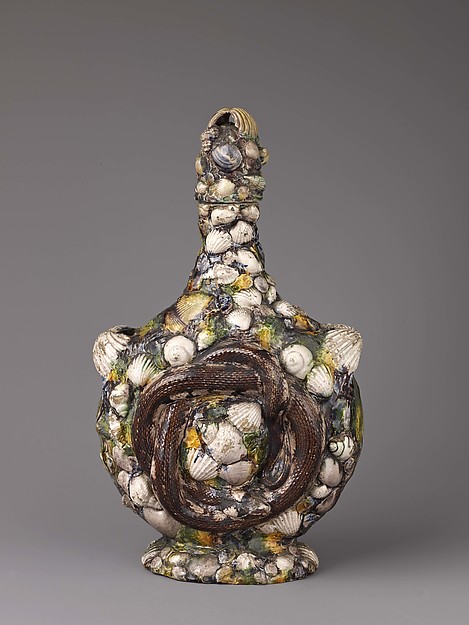This week's invert is something a little different. I was in need of a break from the lab, so I trundled off to the
Metropolitan Museum of Art for an afternoon. I was there to see an
exhibition that displayed impressionist portraits together with the clothes of that period -- in one case, the same dress that was worn by the woman in the portrait. It was a really neat show, and if you are in the area and able to go see it before it closes next week, I highly recommend it.
Then, since I don't get to the museum nearly enough, I took the rest of the afternoon to wander around the permanent collections. At least, to wander around some of the permanent collections, until I was pretty sure that my feet were going to fall off.
In the Medieval Europe galleries I found this neat little gem:
 |
| Pilgrim flask by Bernard Palissy, c. 1560. Photo from the online galleries of the Met. |
|
It is a pilgrim flask from ~1560, made in France by Bernard Palissy. The tag at the museum said that the snake and the shells were cast from life, meaning that a real snake and real shells were used. I counted several different species of snail and bivalves on the flask, some of which I could recognize as common species still found in France today.
The moral of the story is that even on a day off, the snails still follow me everywhere I go.

No comments:
Post a Comment